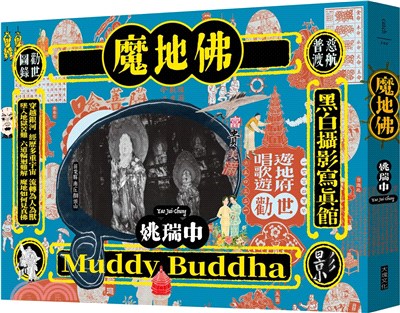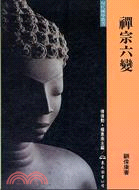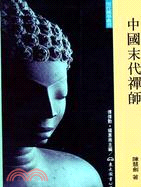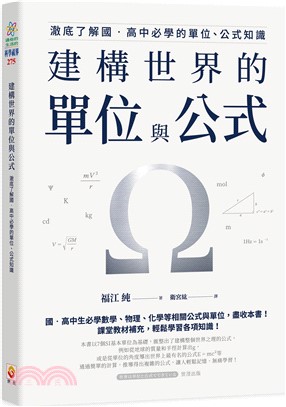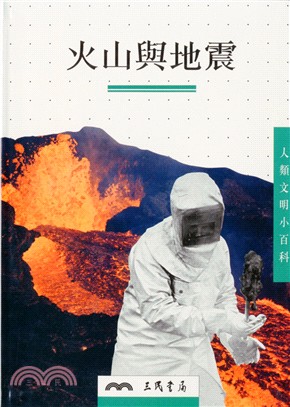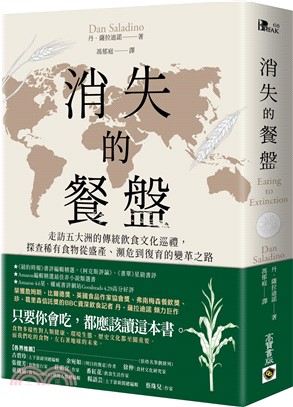魔地佛:姚瑞中攝影勸世圖錄
- 系列名:CATCH
- ISBN13:9786267206096
- 替代書名:Muddy Buddha
- 出版社:大塊文化
- 作者:姚瑞中
- 譯者:官妍廷
- 裝訂/頁數:精裝/176頁
- 規格:15cm*21cm*1cm (高/寬/厚)
- 出版日:2022/11/02
- 促銷優惠:《臺北道》延伸攝影書展-單79雙75
相關商品
商品簡介
作者簡介
書摘/試閱
商品簡介
繼2020臺灣美術雙年展「禽獸不如」、2021年《地獄空》,2022年藝術家姚瑞中將為宇宙流轉做註解,重磅推出攝影勸世文本──《魔地佛》
穿越銀河 經歷多重宇宙
流轉為人為獸 墜入地獄苦難
六道輪迴難解
魔地如何見真佛
繼2020臺灣美術雙年展「禽獸不如」、2021年《地獄空》
2022年藝術家姚瑞中將為宇宙流轉做註解
重磅推出攝影勸世文本──《魔地佛》
一致好評! (依姓名筆畫順序排列)
王俊傑 臺北市立美術館館長
林志明 北教大特聘教授當代策展全英碩士學程主任
徐文瑞 獨立策展人兼藝評家
張美陵 台灣攝影文化資產協會理事長
龔卓軍 國立臺南藝術大學藝術創作理論研究所副教授
「佛」是天竺(古印度)傳入唐朝的翻譯名詞,來自「菩提」之音譯,用當年官話(河洛語)發音似用閩南語唸「佛」,也就是「覺悟者」之意,但在世間享盡榮華富貴的悉達多太子究竟要覺悟些什麼呢?六道輪迴永無休止,真有平等一切眾生這天嗎?
「佛陀」也就是修苦行而覺悟之人,釋迦摩尼佛在二千五百多年前於菩提樹下證得「阿耨多羅三藐三菩提」(無上正等正覺)之前,魔王曾派出代表貪、嗔、痴的三位女兒迷惑世尊,見其不為所動再派出千軍萬馬威脅,然而千萬箭雨落下變成漫天花朵飄散,此時若生慢心易入魔道,即所謂「走火入魔」被巨大妄想蒙蔽,迷於魔境而不自知,非但「我執」未破,還執迷於「法執」與「外相」,不但無法入般若空性,甚至執「空」、「有」二邊,而落入「常見」(生生世世皆可為人)與「斷見」(無有來世因果業力),因此無所謂惡行或善舉,皆可投胎轉世為人,若生而為人立足世上無慚、無愧、無羞、無恥、無信乃至於薄情寡義、放浪形骸、邪淫奸佞,與禽獸比之又有何異也?
君不見許多宗教團體假慈善事業行斂財之實,附佛外道橫行寶島洗腦者眾,自稱活佛者更不乏其人,入「魔地(泥濘)」(Muddy)如流沙而無法自拔,假「佛」(覺者)(Buddha)之義名聞利養,蒙蔽「五蘊」(色、受、想、行、識)墮入無盡權力、慾望、外相之追求,離根本解脫、無有罣礙百億光年之遙尚不足比擬,起心一剎塵、一念三千年,極樂世界與無間地獄懸一念之間,天堂來自地獄,若所有活人終將成為鬼魅幻影,那何謂死亡?又如何出脫呢?
本攝影集乃姚瑞中近年來繼《人外人》、《巨神連線》、《地獄空》後,在此疫情爆發、戰火彌漫之際五濁惡世中,面對宇宙意識、人生去來、因果輪迴、相皆虛妄之反思,與其稱此書為「勸世文本」,也許人們更需要的是「破魔大全」矣!
作者簡介
姚瑞中(YAO Jui-Chung)
1969年生於台灣台北,1994年國立台北藝術大學美術系畢業。曾受邀參加威尼斯雙年展、橫濱三年展、布里斯班亞太三年展、上海雙年展、首爾媒體城市雙年展、曼徹斯特亞洲藝術三年展、深圳雕塑雙年展、亞洲雙年展、雪梨雙年展、台北雙年展等。1992年獲台北攝影新人獎,2013年獲香港集群藝術獎,2014年獲新加坡亞太藝術獎,北藝大傑出校友,2018年獲台新獎。著有《台灣裝置藝術》、《台灣當代攝影新潮流》、《台灣廢墟迷走》、《台灣行為藝術檔案》、《流浪在前衛的國度》、《廢島》、《姚瑞中》、《人外人》、《幽暗微光》、《逛前衛》(合著)、《恨纏綿》、《萬歲山水》、《萬萬歲》、《小幻影》、《海市蜃樓一至七輯暨英文版》(編著)、《攝影訪談輯一至五輯》(主編)、《巨神連線》、《地獄空:姚瑞中拍立得地獄寫景》等書,2020年台灣雙年展策展人。目前為國立台灣師範大學美術系兼任副教授,幻影堂堂主。
1969年生於台灣台北,1994年國立台北藝術大學美術系畢業。曾受邀參加威尼斯雙年展、橫濱三年展、布里斯班亞太三年展、上海雙年展、首爾媒體城市雙年展、曼徹斯特亞洲藝術三年展、深圳雕塑雙年展、亞洲雙年展、雪梨雙年展、台北雙年展等。1992年獲台北攝影新人獎,2013年獲香港集群藝術獎,2014年獲新加坡亞太藝術獎,北藝大傑出校友,2018年獲台新獎。著有《台灣裝置藝術》、《台灣當代攝影新潮流》、《台灣廢墟迷走》、《台灣行為藝術檔案》、《流浪在前衛的國度》、《廢島》、《姚瑞中》、《人外人》、《幽暗微光》、《逛前衛》(合著)、《恨纏綿》、《萬歲山水》、《萬萬歲》、《小幻影》、《海市蜃樓一至七輯暨英文版》(編著)、《攝影訪談輯一至五輯》(主編)、《巨神連線》、《地獄空:姚瑞中拍立得地獄寫景》等書,2020年台灣雙年展策展人。目前為國立台灣師範大學美術系兼任副教授,幻影堂堂主。
書摘/試閱
【內文試閱】
魔地佛
Muddy Buddha
「佛」(Buddha)是從天竺(古印度)傳入西域(翻譯成「浮屠」)、再傳入唐朝之音譯簡稱,用當年官話(河洛語)發音似閩南語唸「佛」矣,簡單說就是「覺悟者」之意,覺一切有情眾生之苦,以般若智慧離苦得樂,因此「佛」不是「神」,是深解如來密義者,世人以如來、世尊、正遍知、世間解、調御丈夫…等十種尊號通稱,三世諸佛皆因因緣俱足誕生世間說法,不但自覺、覺他更令眾生覺滿,度一切苦厄。然而在世間享盡榮華富貴的悉達多太子棄轉輪聖王不當,前往雪山密林勤修苦行六年究竟覺悟了什麼?六道輪迴永無休止,平等一切眾生可能嗎?
「佛陀」是修頭陀苦行而覺悟者,釋迦摩尼佛在二千五百多年前於菩提樹下證得「阿耨多羅三藐三菩提」(無上正等正覺)之前,魔王曾指派代表貪、嗔、痴三位女兒迷惑世尊,見其不為所動再派出千軍萬馬威脅,然而千萬煩惱箭雨落下變成漫天花朵飄散,此時若被引誘而生邪淫慢心易入魔道,即所謂「走火入魔」被巨大妄想蒙蔽,迷於魔境而不自知,非但「我執」未破,還執迷於「法執」與「外相」,不但無法入般若空性,甚至執「空」、「有」二邊,而落入「常見」(生生世世皆可為人)與「斷見」(無有來世因果業力),因此無所謂惡行或善舉,皆可投胎轉世為人,若生而為人立足世上無慚、無愧、無羞、無恥、無信乃至於薄情寡義、放浪形骸、邪淫奸佞,與禽獸比之何異也?
「大佛頂如來密因修證了義諸菩薩萬行首楞嚴經」乃破魔經王,藉由阿難與摩登伽女宿世因緣遭邪淫之術將毀戒體,文殊室利菩薩持楞嚴咒前往破魔,因此因緣導致後來佛對阿難說法「七處破妄」(心不在內、心不在外、心不在眼根、二個識知之心、心無本體、心不在中間、不執著之心非本性)與「十番顯見」(指見性是心非眼、客塵顯見心不動、觀河顯見性無遷、垂手顯見心無滅、標指顯見性無還、周遍顯見性非物、無是非是性為真、性非因緣非自然、二妄顯見性非見、破和合見如來藏),對話之間點出應無所住心,再以「二十五圓通」請大阿羅漢、菩薩分享修行心得,最後以五蘊(色、受、想、行、識)各十處魔境總和「五十陰魔」,佛陀藉此告知世人魔從心生、心無外魔、切勿著相。
心識甚為微妙,動念乃至剎塵,所有行為造作皆來自起心動念,因此大乘佛教以「百法明門」歸納出「有為法」,分為「心法八識」(眼、耳、鼻、舌、身、意、末那識、阿賴耶識)、五十一種「心所有法」(遍行五、別境五、善十一、煩惱六、隨煩惱二十、不定四),其中貪、瞋、痴、慢、疑、惡見乃「根本煩惱」,二十個「隨煩惱」為忿、恨、惱、覆、誑、諂、憍、害、嫉、慳、無慚、無愧、不信、懈怠、放逸、惛沈、掉舉、失念、不正知、散亂為世人常犯之舉,「心不相應行法」則有二十四種(得、命根、眾同分、異生性、無想定、滅盡定、無想報、名身、句身、文身、生、老、住、無常、流轉、定異、相應、勢速、次第、方、時、數、和合性、不和合性),色法十一款(眼、耳、鼻、舌、身、色、聲、香、味、觸、法處所攝色),構成九十四種「有為法」,指所有造作、變動、消亡、因緣和合而生現行造業,至於六個「無為法」為本體界,包括虛空無為、擇滅無為、非擇滅無為、不動無為、滅受想無為、真如無為,指本自具足,不依賴外緣而存在之法。
佛陀入大般涅槃前曾囑咐阿難依「四念處」(觀身不淨、觀受是苦、觀心無我、觀法無常)而住,以「戒」(不殺生、不邪淫、不偷竊、不妄語、不惡口、不兩舌、不綺語、不貪、不嗔、不痴)為師,依法不依人,連「空相」都不應執著、何況是用木石所刻之外相?因此釋迦摩尼佛入滅後五、六百年並無佛像供人膜拜,頂多造塔寺紀念,皆以象徵手法(法輪、紋飾、菩提樹、台座、佛龕……)弘法,直至貴霜王朝以犍陀羅(Gandhāra,位於巴基斯坦與阿富汗一帶)和秣菟羅(Mathurā,位於印度中北部)為中心,才逐漸發展出佛陀三十二相、八十種隨行好,讓信徒可以頂禮膜拜,開始進入神格化時期,歷經近二千年,無論是南傳、藏傳、漢傳、東密…,皆發展出系統縝密、各具風格、精雕細琢之佛像與繁複儀軌,讓世人一窺佛教藝術博大精深。
然而世風日下、人心不古,許多宗教團體假慈善事業行個人崇拜與斂財之實,附佛外道橫行寶島洗腦者眾,自稱活佛、發大妄語者不乏其人,入「魔地(泥濘)」(Muddy)如陷「塵沙惑」而無法自拔,假「佛」(覺者)(Buddha)之義名聞利養、行教主個人崇拜或以神通示人,蒙蔽「五蘊」(色、受、想、行、識)墮入無盡權力、慾望、財富、外相之追求,離根本解脫、無有罣礙、畢竟空皆遙不可及,起心一剎那、一念三千年,西方極樂世界與無間地獄懸於念起、覺遲之間,沒有天堂何來地獄?若所有人類終將成為鬼魅幻影,那何謂死亡?又如何出脫「三界」(欲界四天、色界十八天、無色界四空天)呢?
在此瘟疫爆發、戰火彌漫之五濁惡世,面對宇宙意識、人生去來、因果輪迴、業力爆發等人生終極課題,不禁深覺人類出現地球不過數十萬年,卻因無盡貪婪、鬥爭堅固、強取豪奪、迷失本真,濫捕嗜殺導致物種大量滅絕,工業革命、資本主義、全球化加速耗盡星球資源,無怪乎富豪、政客不吝豪擲投資馬斯克飛往火星計畫,與其遷往它星居住換來人類永世綿延,也許換個念頭、改變價值觀與萬物共榮共存可能是更佳選擇。地球在浩瀚宇宙不斷高速旋轉,萬物皆在漩渦狀態,人心慾望被無所不在之暗物質捲入洪流,人類心識若入魔扭曲,是否最終也會坍塌成無數黑洞吞食一切物質?
身為手無縛雞力、乏撼動山河勢、無病愛呻吟之大叔藝術家,面對疫情一籌莫展,雖非社會賢達也非文人雅士,對於過往二年有餘、世界被莫名按下暫停鍵總該有些表示,試圖透過十餘年來所攝黑白底片反思楞嚴經「相皆虛妄」要旨,與其稱此書為「警世圖鑑」,也許人們更需要乃醍醐灌頂之「破魔心咒」矣!
姚瑞中2022年夏至寫於幻影堂(The illusion)
Muddy Buddha
姚瑞中Yao Jui-Chung
中翻英╱官妍廷
The title “Buddha” is borrowed from Pali Buddho and abbreviated as Hu̍t in Southern Min in Tang Dynasty. Briefly speaking, the title represents “the awakened one,” who thoroughly comprehends the suffering of all sentient beings and achieves ultimate happiness through Prajna (wisdom). Therefore, “Buddha” is not a “deity” but the awakened one who comprehends the great doctrine of Tathāgata (meaning “one who has thus come” in Pali), and is called by “World Honored One,” “the Correctly Enlightened,” “the Knower of the Secular World,” “the Tamer,” in the ten epithets. Buddhas of the past, present, and future come to the secular world to preach because of the concatenation of cause and effect. They are self-awakened and enlightening others, saving sentient beings from the painful obstruction. However, Prince Siddhartha Gautama, who had enjoyed all the glory and wealth in the secular world, gave up the opportunity to become a Chakravarti (wheel-turning sacred king) and practiced Tapas (meaning a variety of austere practice in Sanskrit) in the Himalayas six years. What exactly did he comprehend? There is no terminal point of the reincarnation of the six paths; is it possible to liberate all the sentient beings?
Buddha has attained enlightenment through practicing Dhutanga austerities. Before Shakyamuni attained “Annutara-samyak-sambodhi” (supreme correct enlightenment) under the Bodhi tree more than 2,500 years ago, the demon Mara sent his three daughters, identified as thirst, aversion, and desire, to tempt the World Honored One. However, when the demon found Shakyamuni remained unmoved, he sent out thousands of devil troops to threaten him; however, those shooting arrows from the troop became flowers scattered in the sky. At this point, if one was tempted to commit adultery and to become arrogant, they might fall into the path of demons, which is the so-called “state possessed by a demon”―being obstructed by great delusion without any awareness. In such a situation, one is not only unable to break free from the attachment to their ego but is also restricted by the notion of element constructs and sheer external appearance. Furthermore, they cannot comprehend the nature of the void and even cling to the dichotomy of emptiness and existence and fall into the fallacy of the view that the individual has an unchanging self and the concept that one’s consciousness ceases upon death. With such a mindset, there is no difference between an evil deed and a good deed, and one can be reborn as a human being again. On the other hand, what is the difference between them and animals if one is without shame, remorse, and esteem and is even unfeeling, lustful, and lascivious?
Minds are delicate and subtle, and all human behavior and actions come from the mind. Therefore, Mahayana Buddhism summarizes the “conditioned existence” into the “eight consciousness” (including eye, ear, nose, tongue, body, and mental consciousness, the deluded awareness, and the appropriating consciousness), fifty-one “mental factors” (the five pervasive functions, the five sperate realms, the eleven goodness, the six primary afflictions, the twenty secondary afflictions, and the four indeterminate dharmas). Among which, desire, enmity, ignorance, pride, doubt, and false views are the six primary afflictions. The twenty “secondary afflictions” refer to anger, enmity, vexation, concealing, deceit, flattery, haughtiness, harming, jealousy, stinginess, unscrupulousness, shamelessness, faithlessness, sloth, indolence, depression, flightiness, forgetting, incorrect knowledge, and scattering, are commonly committed by the general public. However, there are twenty-four kinds of “elements unassociated with the mind,” including acquisition, life force, human commonality, nature of unenlightened sentient being, the concentration of non-conceptualization, the concentration of extinction, result of non-conceptualization, a group of names, a group of sentences, a group of text, birth, agedness, abiding, impermanence, transmigration, concomitance, rapid changes, sequence, direction, time, number, completeness, and incompleteness. And the eleven forms comprise eye, ear, nose, tongue, body, form, sound, odor, taste, and touch. In total, they form ninety-four “conditioned existence,” referring to the dharma that appears, changes, and disappears in response to the development of cause and effect. As to the six “unconditioned existence,” which is everything not subject to the principle of cause and effect, including tranquility of unconditional space, the tranquility of the unconditional and selected, the tranquility of the unconditional and unselected, the undisturbedness of unconditional space, non-sensation and non-thought of unconditional space, suchness of unconditional space.
When Buddha entered the ultimate state of soteriological release (the great Nirvana), he instructed Ananda to abide by the four “foundations of mindfulness” (to consider the body as impure and utterly filthy, to consider the sensation as always resulting in suffering, to consider the mind as being dependent and without nature, and consider things as impermanent). The preceptor (here, the author refers to the “ten good deeds,” including not to kill, not to steal, to avoid sexual misconduct, not to lie, abstention from slanderous speech, abstention from harsh speech, abstention from idle talk, non-greed, non-hatred, and right views) will be his guide, and he should always follow the dharmas instead of dharma masters. One should ever cling to “illusion” (or the nature of emptiness), let alone the human-made wooden or stone sculpture. Therefore, five or six centuries after the Nirvana of Shakyamuni Buddha, there were no statues of him to be worshipped. Still, the Buddha was only symbolically commemorated in pagodas and temples (as dharmachakra, ornaments, bodhi trees, pedestals, and niches). It was not until the 1st to the 5th century, when Gandhara (in present-day Pakistan and Afghanistan) and Mathurā (north-central India) became the center of the Kushan Empire, that the thirty-two marks of the Buddha and the eighty secondary characteristics were gradually developed. The Buddha’s statue was then made, and the believers could worship the statues, and Buddhism entered a period of divinization. Over the past two millennia, Theravada, Tibetan Buddhism, Han Buddhism, and Esoteric Buddhism have all developed a systematic and elaborate collection of Buddhist statues and sophisticated rituals, showing the profound depths of Buddhist art.
However, society is gradually deteriorating, and many religious groups are practicing individual worship and accumulating wealth by unfair means under the pretext of charity―many people claim to be living Buddhas and make false speeches. When one enters the realm of devils (Muddy), it is like falling into a trap where one cannot discern the world’s true nature. In the name of Buddha, they develop a cult of personality and showed people their supernatural power. When one’s “five aggregates” (matter of form, sensation, recognition, mental formation, and consciousness) are covered, they fall into the endless pursuit of power, desire, wealth, and appearance, being far beyond the reach of the ultimate release, freedom from all obstacles and worries, and the ultimate emptiness. A moment of thought will last for a long time. The Western Pure Land of the Ultimate Bliss and Avici are determined and demonstrated by our thoughts. If all human beings eventually become ghosts and spirits, then what is death exactly? How can one escape from the “three realms” (the realm of sensual desire, the realm of form, and the formless realm of pure spirits)?
As a grumpy middle-aged artist with no significant strength and power, I also get lost in the pandemic over the past two years. However, I have been trying to reflect on the “every form is an illusion” thinking in Śūraṅgama Sūtra through monochrome photography I have done over the past ten years. Rather than naming this collection “an illustration book of caution,” perhaps people need more of an enlightening “devil-destroying mantra”!
魔地佛
Muddy Buddha
「佛」(Buddha)是從天竺(古印度)傳入西域(翻譯成「浮屠」)、再傳入唐朝之音譯簡稱,用當年官話(河洛語)發音似閩南語唸「佛」矣,簡單說就是「覺悟者」之意,覺一切有情眾生之苦,以般若智慧離苦得樂,因此「佛」不是「神」,是深解如來密義者,世人以如來、世尊、正遍知、世間解、調御丈夫…等十種尊號通稱,三世諸佛皆因因緣俱足誕生世間說法,不但自覺、覺他更令眾生覺滿,度一切苦厄。然而在世間享盡榮華富貴的悉達多太子棄轉輪聖王不當,前往雪山密林勤修苦行六年究竟覺悟了什麼?六道輪迴永無休止,平等一切眾生可能嗎?
「佛陀」是修頭陀苦行而覺悟者,釋迦摩尼佛在二千五百多年前於菩提樹下證得「阿耨多羅三藐三菩提」(無上正等正覺)之前,魔王曾指派代表貪、嗔、痴三位女兒迷惑世尊,見其不為所動再派出千軍萬馬威脅,然而千萬煩惱箭雨落下變成漫天花朵飄散,此時若被引誘而生邪淫慢心易入魔道,即所謂「走火入魔」被巨大妄想蒙蔽,迷於魔境而不自知,非但「我執」未破,還執迷於「法執」與「外相」,不但無法入般若空性,甚至執「空」、「有」二邊,而落入「常見」(生生世世皆可為人)與「斷見」(無有來世因果業力),因此無所謂惡行或善舉,皆可投胎轉世為人,若生而為人立足世上無慚、無愧、無羞、無恥、無信乃至於薄情寡義、放浪形骸、邪淫奸佞,與禽獸比之何異也?
「大佛頂如來密因修證了義諸菩薩萬行首楞嚴經」乃破魔經王,藉由阿難與摩登伽女宿世因緣遭邪淫之術將毀戒體,文殊室利菩薩持楞嚴咒前往破魔,因此因緣導致後來佛對阿難說法「七處破妄」(心不在內、心不在外、心不在眼根、二個識知之心、心無本體、心不在中間、不執著之心非本性)與「十番顯見」(指見性是心非眼、客塵顯見心不動、觀河顯見性無遷、垂手顯見心無滅、標指顯見性無還、周遍顯見性非物、無是非是性為真、性非因緣非自然、二妄顯見性非見、破和合見如來藏),對話之間點出應無所住心,再以「二十五圓通」請大阿羅漢、菩薩分享修行心得,最後以五蘊(色、受、想、行、識)各十處魔境總和「五十陰魔」,佛陀藉此告知世人魔從心生、心無外魔、切勿著相。
心識甚為微妙,動念乃至剎塵,所有行為造作皆來自起心動念,因此大乘佛教以「百法明門」歸納出「有為法」,分為「心法八識」(眼、耳、鼻、舌、身、意、末那識、阿賴耶識)、五十一種「心所有法」(遍行五、別境五、善十一、煩惱六、隨煩惱二十、不定四),其中貪、瞋、痴、慢、疑、惡見乃「根本煩惱」,二十個「隨煩惱」為忿、恨、惱、覆、誑、諂、憍、害、嫉、慳、無慚、無愧、不信、懈怠、放逸、惛沈、掉舉、失念、不正知、散亂為世人常犯之舉,「心不相應行法」則有二十四種(得、命根、眾同分、異生性、無想定、滅盡定、無想報、名身、句身、文身、生、老、住、無常、流轉、定異、相應、勢速、次第、方、時、數、和合性、不和合性),色法十一款(眼、耳、鼻、舌、身、色、聲、香、味、觸、法處所攝色),構成九十四種「有為法」,指所有造作、變動、消亡、因緣和合而生現行造業,至於六個「無為法」為本體界,包括虛空無為、擇滅無為、非擇滅無為、不動無為、滅受想無為、真如無為,指本自具足,不依賴外緣而存在之法。
佛陀入大般涅槃前曾囑咐阿難依「四念處」(觀身不淨、觀受是苦、觀心無我、觀法無常)而住,以「戒」(不殺生、不邪淫、不偷竊、不妄語、不惡口、不兩舌、不綺語、不貪、不嗔、不痴)為師,依法不依人,連「空相」都不應執著、何況是用木石所刻之外相?因此釋迦摩尼佛入滅後五、六百年並無佛像供人膜拜,頂多造塔寺紀念,皆以象徵手法(法輪、紋飾、菩提樹、台座、佛龕……)弘法,直至貴霜王朝以犍陀羅(Gandhāra,位於巴基斯坦與阿富汗一帶)和秣菟羅(Mathurā,位於印度中北部)為中心,才逐漸發展出佛陀三十二相、八十種隨行好,讓信徒可以頂禮膜拜,開始進入神格化時期,歷經近二千年,無論是南傳、藏傳、漢傳、東密…,皆發展出系統縝密、各具風格、精雕細琢之佛像與繁複儀軌,讓世人一窺佛教藝術博大精深。
然而世風日下、人心不古,許多宗教團體假慈善事業行個人崇拜與斂財之實,附佛外道橫行寶島洗腦者眾,自稱活佛、發大妄語者不乏其人,入「魔地(泥濘)」(Muddy)如陷「塵沙惑」而無法自拔,假「佛」(覺者)(Buddha)之義名聞利養、行教主個人崇拜或以神通示人,蒙蔽「五蘊」(色、受、想、行、識)墮入無盡權力、慾望、財富、外相之追求,離根本解脫、無有罣礙、畢竟空皆遙不可及,起心一剎那、一念三千年,西方極樂世界與無間地獄懸於念起、覺遲之間,沒有天堂何來地獄?若所有人類終將成為鬼魅幻影,那何謂死亡?又如何出脫「三界」(欲界四天、色界十八天、無色界四空天)呢?
在此瘟疫爆發、戰火彌漫之五濁惡世,面對宇宙意識、人生去來、因果輪迴、業力爆發等人生終極課題,不禁深覺人類出現地球不過數十萬年,卻因無盡貪婪、鬥爭堅固、強取豪奪、迷失本真,濫捕嗜殺導致物種大量滅絕,工業革命、資本主義、全球化加速耗盡星球資源,無怪乎富豪、政客不吝豪擲投資馬斯克飛往火星計畫,與其遷往它星居住換來人類永世綿延,也許換個念頭、改變價值觀與萬物共榮共存可能是更佳選擇。地球在浩瀚宇宙不斷高速旋轉,萬物皆在漩渦狀態,人心慾望被無所不在之暗物質捲入洪流,人類心識若入魔扭曲,是否最終也會坍塌成無數黑洞吞食一切物質?
身為手無縛雞力、乏撼動山河勢、無病愛呻吟之大叔藝術家,面對疫情一籌莫展,雖非社會賢達也非文人雅士,對於過往二年有餘、世界被莫名按下暫停鍵總該有些表示,試圖透過十餘年來所攝黑白底片反思楞嚴經「相皆虛妄」要旨,與其稱此書為「警世圖鑑」,也許人們更需要乃醍醐灌頂之「破魔心咒」矣!
姚瑞中2022年夏至寫於幻影堂(The illusion)
Muddy Buddha
姚瑞中Yao Jui-Chung
中翻英╱官妍廷
The title “Buddha” is borrowed from Pali Buddho and abbreviated as Hu̍t in Southern Min in Tang Dynasty. Briefly speaking, the title represents “the awakened one,” who thoroughly comprehends the suffering of all sentient beings and achieves ultimate happiness through Prajna (wisdom). Therefore, “Buddha” is not a “deity” but the awakened one who comprehends the great doctrine of Tathāgata (meaning “one who has thus come” in Pali), and is called by “World Honored One,” “the Correctly Enlightened,” “the Knower of the Secular World,” “the Tamer,” in the ten epithets. Buddhas of the past, present, and future come to the secular world to preach because of the concatenation of cause and effect. They are self-awakened and enlightening others, saving sentient beings from the painful obstruction. However, Prince Siddhartha Gautama, who had enjoyed all the glory and wealth in the secular world, gave up the opportunity to become a Chakravarti (wheel-turning sacred king) and practiced Tapas (meaning a variety of austere practice in Sanskrit) in the Himalayas six years. What exactly did he comprehend? There is no terminal point of the reincarnation of the six paths; is it possible to liberate all the sentient beings?
Buddha has attained enlightenment through practicing Dhutanga austerities. Before Shakyamuni attained “Annutara-samyak-sambodhi” (supreme correct enlightenment) under the Bodhi tree more than 2,500 years ago, the demon Mara sent his three daughters, identified as thirst, aversion, and desire, to tempt the World Honored One. However, when the demon found Shakyamuni remained unmoved, he sent out thousands of devil troops to threaten him; however, those shooting arrows from the troop became flowers scattered in the sky. At this point, if one was tempted to commit adultery and to become arrogant, they might fall into the path of demons, which is the so-called “state possessed by a demon”―being obstructed by great delusion without any awareness. In such a situation, one is not only unable to break free from the attachment to their ego but is also restricted by the notion of element constructs and sheer external appearance. Furthermore, they cannot comprehend the nature of the void and even cling to the dichotomy of emptiness and existence and fall into the fallacy of the view that the individual has an unchanging self and the concept that one’s consciousness ceases upon death. With such a mindset, there is no difference between an evil deed and a good deed, and one can be reborn as a human being again. On the other hand, what is the difference between them and animals if one is without shame, remorse, and esteem and is even unfeeling, lustful, and lascivious?
Minds are delicate and subtle, and all human behavior and actions come from the mind. Therefore, Mahayana Buddhism summarizes the “conditioned existence” into the “eight consciousness” (including eye, ear, nose, tongue, body, and mental consciousness, the deluded awareness, and the appropriating consciousness), fifty-one “mental factors” (the five pervasive functions, the five sperate realms, the eleven goodness, the six primary afflictions, the twenty secondary afflictions, and the four indeterminate dharmas). Among which, desire, enmity, ignorance, pride, doubt, and false views are the six primary afflictions. The twenty “secondary afflictions” refer to anger, enmity, vexation, concealing, deceit, flattery, haughtiness, harming, jealousy, stinginess, unscrupulousness, shamelessness, faithlessness, sloth, indolence, depression, flightiness, forgetting, incorrect knowledge, and scattering, are commonly committed by the general public. However, there are twenty-four kinds of “elements unassociated with the mind,” including acquisition, life force, human commonality, nature of unenlightened sentient being, the concentration of non-conceptualization, the concentration of extinction, result of non-conceptualization, a group of names, a group of sentences, a group of text, birth, agedness, abiding, impermanence, transmigration, concomitance, rapid changes, sequence, direction, time, number, completeness, and incompleteness. And the eleven forms comprise eye, ear, nose, tongue, body, form, sound, odor, taste, and touch. In total, they form ninety-four “conditioned existence,” referring to the dharma that appears, changes, and disappears in response to the development of cause and effect. As to the six “unconditioned existence,” which is everything not subject to the principle of cause and effect, including tranquility of unconditional space, the tranquility of the unconditional and selected, the tranquility of the unconditional and unselected, the undisturbedness of unconditional space, non-sensation and non-thought of unconditional space, suchness of unconditional space.
When Buddha entered the ultimate state of soteriological release (the great Nirvana), he instructed Ananda to abide by the four “foundations of mindfulness” (to consider the body as impure and utterly filthy, to consider the sensation as always resulting in suffering, to consider the mind as being dependent and without nature, and consider things as impermanent). The preceptor (here, the author refers to the “ten good deeds,” including not to kill, not to steal, to avoid sexual misconduct, not to lie, abstention from slanderous speech, abstention from harsh speech, abstention from idle talk, non-greed, non-hatred, and right views) will be his guide, and he should always follow the dharmas instead of dharma masters. One should ever cling to “illusion” (or the nature of emptiness), let alone the human-made wooden or stone sculpture. Therefore, five or six centuries after the Nirvana of Shakyamuni Buddha, there were no statues of him to be worshipped. Still, the Buddha was only symbolically commemorated in pagodas and temples (as dharmachakra, ornaments, bodhi trees, pedestals, and niches). It was not until the 1st to the 5th century, when Gandhara (in present-day Pakistan and Afghanistan) and Mathurā (north-central India) became the center of the Kushan Empire, that the thirty-two marks of the Buddha and the eighty secondary characteristics were gradually developed. The Buddha’s statue was then made, and the believers could worship the statues, and Buddhism entered a period of divinization. Over the past two millennia, Theravada, Tibetan Buddhism, Han Buddhism, and Esoteric Buddhism have all developed a systematic and elaborate collection of Buddhist statues and sophisticated rituals, showing the profound depths of Buddhist art.
However, society is gradually deteriorating, and many religious groups are practicing individual worship and accumulating wealth by unfair means under the pretext of charity―many people claim to be living Buddhas and make false speeches. When one enters the realm of devils (Muddy), it is like falling into a trap where one cannot discern the world’s true nature. In the name of Buddha, they develop a cult of personality and showed people their supernatural power. When one’s “five aggregates” (matter of form, sensation, recognition, mental formation, and consciousness) are covered, they fall into the endless pursuit of power, desire, wealth, and appearance, being far beyond the reach of the ultimate release, freedom from all obstacles and worries, and the ultimate emptiness. A moment of thought will last for a long time. The Western Pure Land of the Ultimate Bliss and Avici are determined and demonstrated by our thoughts. If all human beings eventually become ghosts and spirits, then what is death exactly? How can one escape from the “three realms” (the realm of sensual desire, the realm of form, and the formless realm of pure spirits)?
As a grumpy middle-aged artist with no significant strength and power, I also get lost in the pandemic over the past two years. However, I have been trying to reflect on the “every form is an illusion” thinking in Śūraṅgama Sūtra through monochrome photography I have done over the past ten years. Rather than naming this collection “an illustration book of caution,” perhaps people need more of an enlightening “devil-destroying mantra”!
主題書展
更多主題書展
更多書展本週66折
您曾經瀏覽過的商品
購物須知
為了保護您的權益,「三民網路書店」提供會員七日商品鑑賞期(收到商品為起始日)。
若要辦理退貨,請在商品鑑賞期內寄回,且商品必須是全新狀態與完整包裝(商品、附件、發票、隨貨贈品等)否則恕不接受退貨。




